In the dynamic realm of business intelligence (BI) tools, Power BI has emerged as a frontrunner, lauded for its robust features, seamless integration capabilities, and broad adoption across diverse industries.
Microsoft’s Power BI has carved a niche for itself by offering a comprehensive suite of analytics tools, empowering businesses to visualize data, share insights, and make informed decisions with ease. Its integration with other Microsoft products, such as Azure and Office 365, further cements its position as a preferred choice for many organizations,
Why Consider Power BI Alternatives?
Microsoft’s Power BI has become a cornerstone in business intelligence, offering a comprehensive suite that enhances data visualization and decision-making.
However, certain limitations have led organizations to seek alternative solutions.
Why Seek Power BI Alternatives?
- Cost:The investment in Power BI’s Pro or Premium plans can be significant, especially when considering the total cost of ownership, including licenses, training, and implementation. This makes it prohibitive for startups and SMBs.
- Complexity: Organizations, particularly those with limited IT resources, may prefer tools that offer simplicity and ease of use without sacrificing analytical depth. The platform’s complexity, requiring a steep learning curve, can be overwhelming for users who need quick answers rather than in-depth analytics.
- Integration Challenges: Businesses operating with diverse software ecosystems may find Power BI’s integration capabilities wanting. Smooth data flow becomes cumbersome, leading to inefficiencies. This integration challenge compels a search for tools offering broader compatibility and easier data consolidation.
1. Coefficient + Google Sheets/Excel
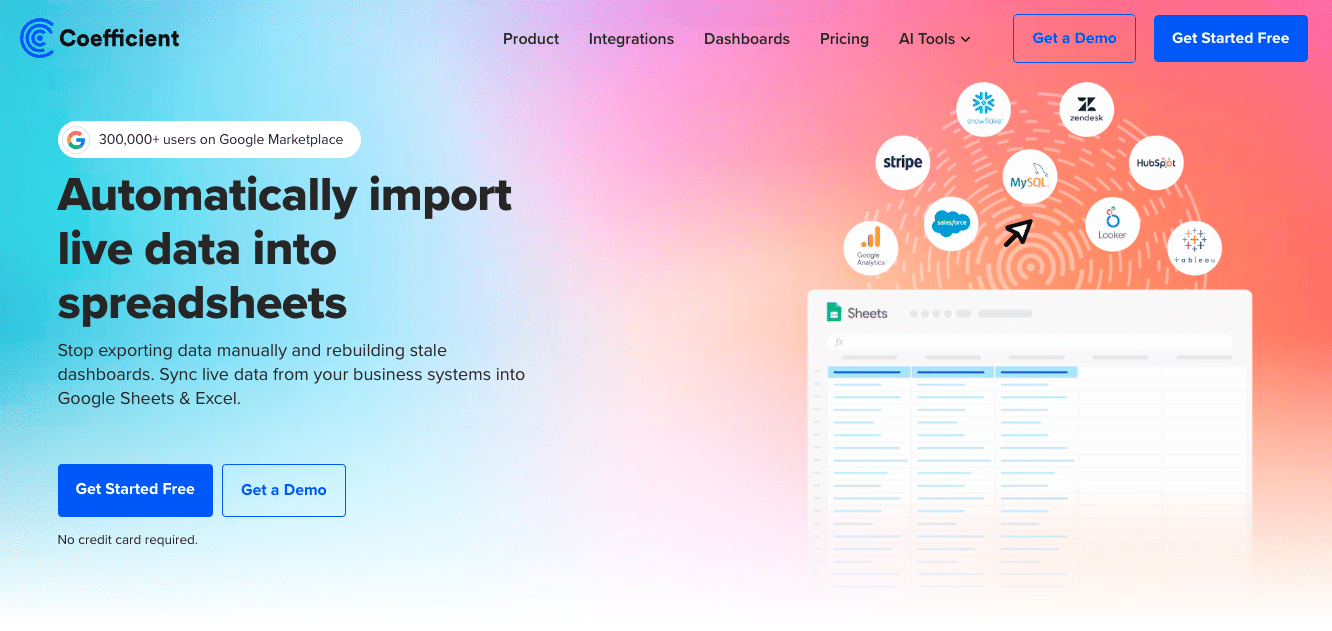
Coefficient is a no-code analytics powerhouse when paired with Google Sheets or Excel. It’s easy-to-use and easy-to-scale – just connect to your spreadsheet, set permissions, and let Coefficient handle the rest.
Pros
- No Code: It’s as easy as point, click, and go. Automatically (and reliably) sync live data from popular CRMs, databases, ad platforms, and other performance marketing tools into Excel and Google Sheets. And, set it on a refresh schedule.
- Reporting: Access a robust library of free dashboard templates. Connect your data sources with a click and share reports with your entire team for free.
- Collaboration: Share reports across your team at no extra cost. Set up real-time Slack and email alerts to keep everyone informed.
Cons
The only downside to Coefficient is that any scheduled automations are not free forever. However, its pricing plans are affordable, and its benefits far outweigh the app’s costs.
2. Qlik Sense
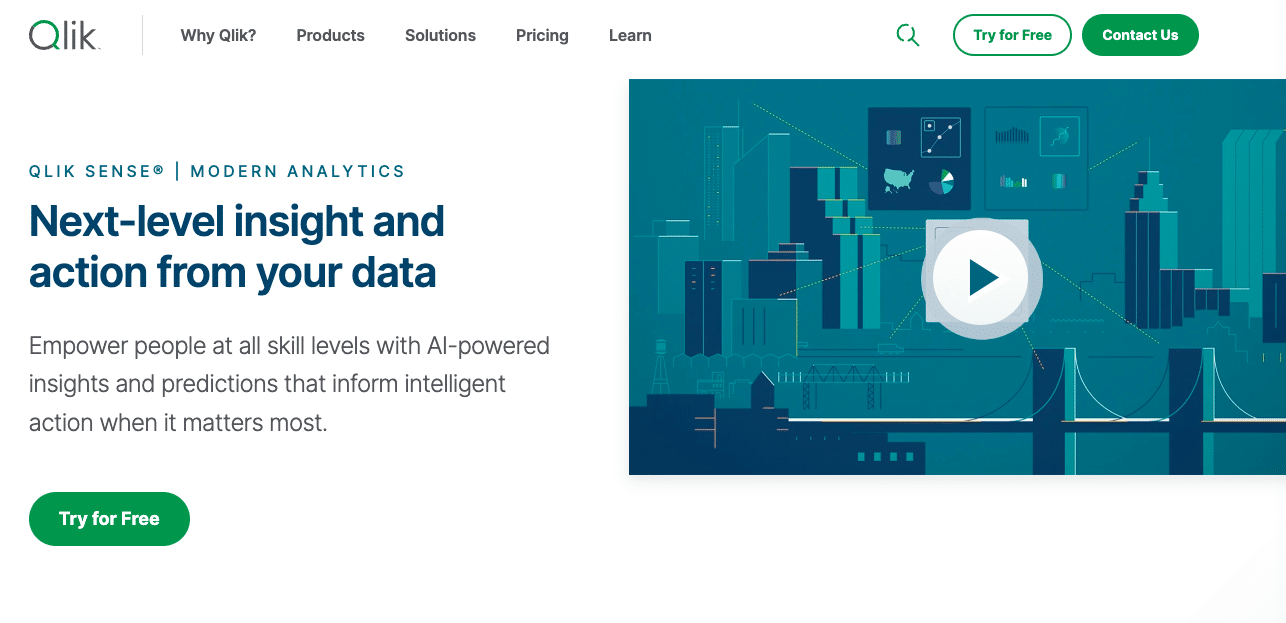
Qlik Sense stands out with its associative analytics model, offering users the ability to explore connections across their data intuitively. It’s designed for businesses that need comprehensive insights without compromising on ease of use.
Pros:
- Interactive Dashboards: Provides dynamic and interactive data visualization tools.
- Data Integration: Seamlessly integrates with a wide array of data sources and systems.
- Collaboration Features: Facilitates sharing and collaboration on analytics across teams.
Cons:
- Learning Curve: New users may require time to adapt to the associative model.
- Pricing Structure: Pricing can be opaque, requiring direct contact for quotes.
3. Looker (Google Cloud)
Now part of Google Cloud, Looker offers a data analytics platform that emphasizes customization and integration, particularly within the Google ecosystem. Looker is best for medium-to-large-sized enterprises seeking a robust, customizable BI solution that integrates tightly with Google Cloud services and other third-party applications.
Pros:
- Deep Customization: Offers extensive customization options for dashboards and reports.
- Scalability: Easily scales with business growth, handling large datasets effectively.
- Community and Support: Benefits from strong community support and Google’s infrastructure.
Cons:
- Technical Expertise Required: To leverage its full potential, users often need a good grasp of SQL-based languages and data modeling.
- Pricing: May be less transparent, with custom pricing that can vary significantly.
4. Domo
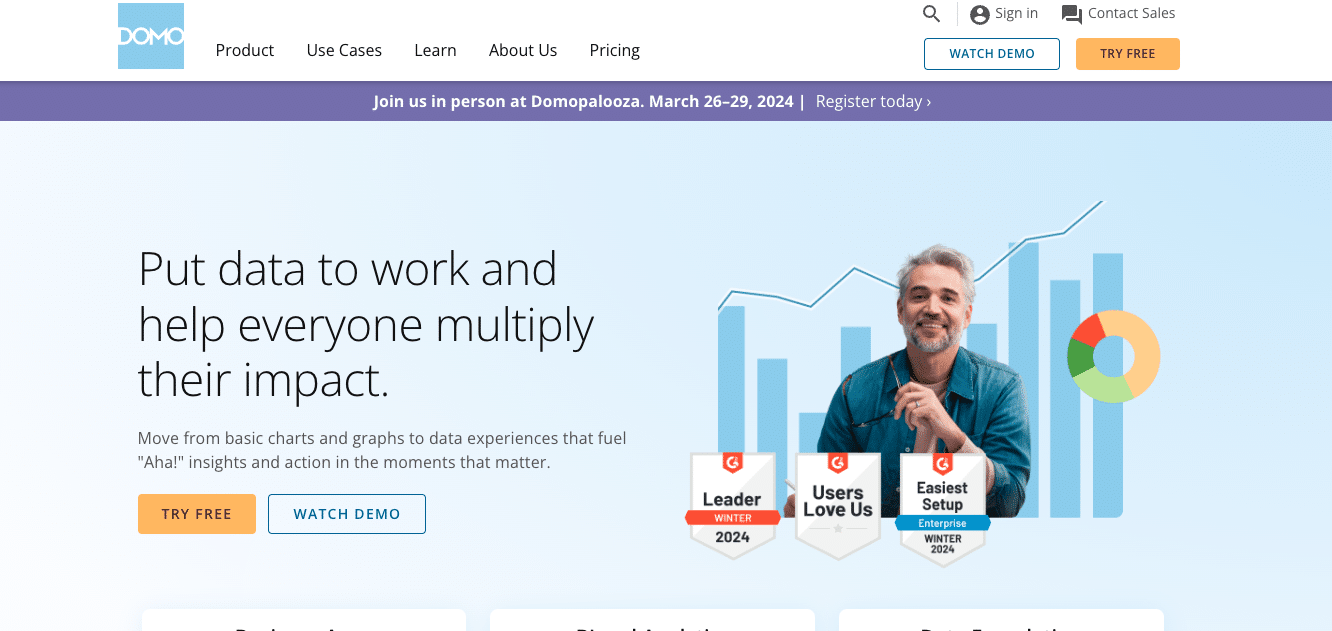
Domo is praised for its business process automation capabilities and real-time data integration. Its advanced visualizations and AI-driven analytics support informed decision-making.
While Domo’s beautiful interface and performance are notable, the lack of transparent pricing and potential steep learning curve for BI newcomers could be considered downsides.
Pros:
- Collaborative Tools: Facilitates teamwork with built-in collaboration features, making it easy to share insights and make data-driven decisions collectively.
- Customizable Dashboards: Provides a high degree of customization, allowing users to tailor reports and dashboards to their specific needs.
- User-Friendly Interface: Designed with non-technical users in mind, ensuring a smooth user experience without compromising on capability.
Cons:

Stop exporting data manually. Sync data from your business systems into Google Sheets or Excel with Coefficient and set it on a refresh schedule.

- Pricing Transparency: Pricing information is not readily available, requiring potential customers to contact sales for quotes.
- Complexity for Large Scale: While Domo is user-friendly, managing it at a large scale can become complex, necessitating a dedicated team for administration and governance.
5. Tableau
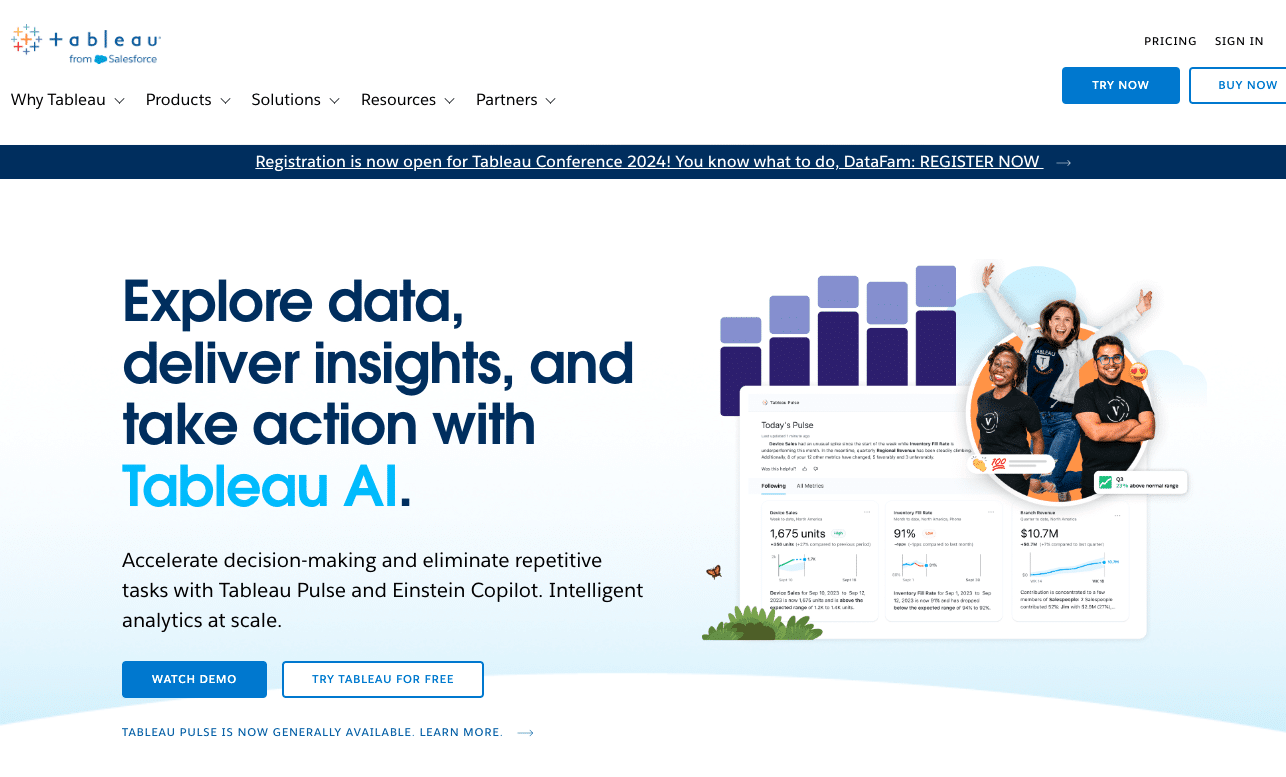
Tableau is widely recognized for its powerful data visualization capabilities, supporting the entire analytics journey from data preparation to insight sharing. It’s best for organizations and professionals who prioritize data visualization and need a scalable solution that can handle complex data sets and analytics.
Pros:
- Flexibility: Offers a high degree of customization for dashboards and reports.
- Community and Support: Boasts a large community of users and extensive resources for learning and troubleshooting.
- Mobile Accessibility: Provides robust mobile apps for data access on the go.
Cons:
- Pricing: Can be on the higher end, especially for small businesses or individual users.
- Complexity: While user-friendly, mastering advanced features requires a learning curve.
6. Sisense
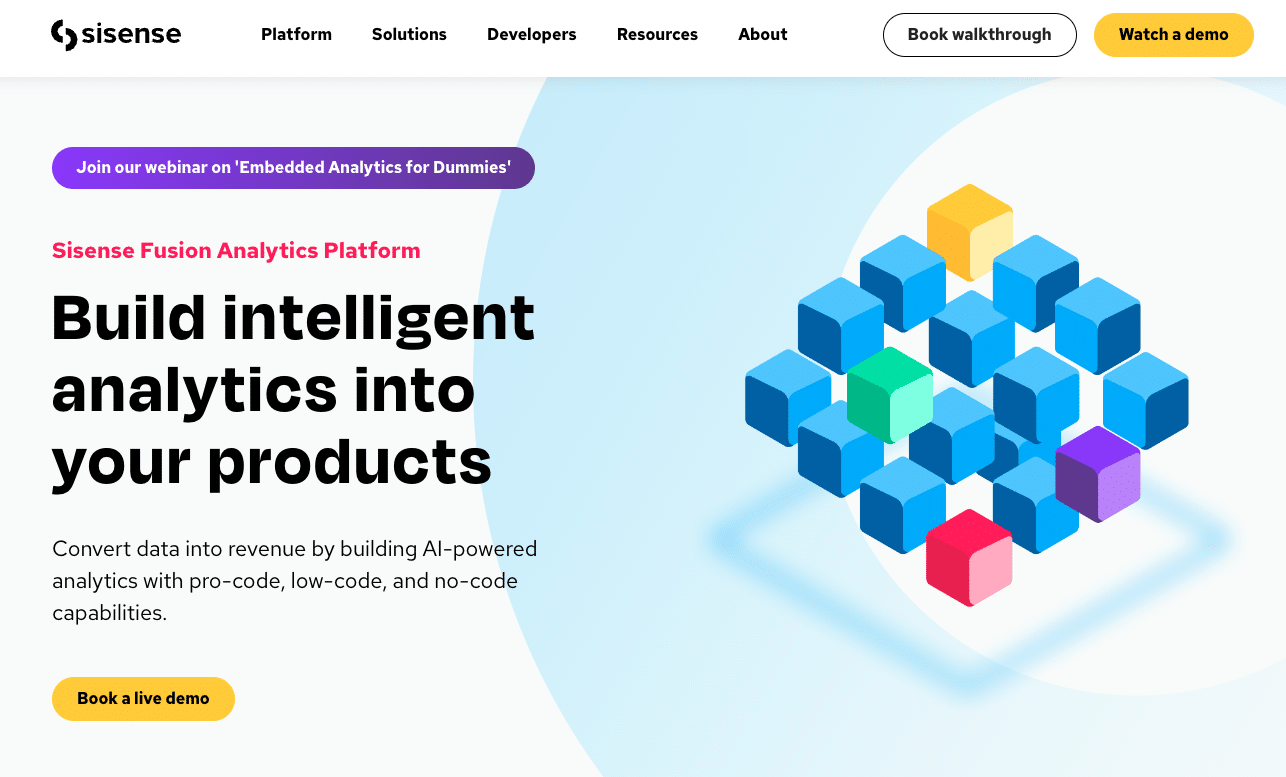
Sisense offers a robust BI and analytical platform, infusing AI-driven analytics into workflows. With over 100 pre-built data connectors and an intuitive drag-and-drop interface, Sisense supports quick, AI-powered dashboard customization.
It’s well-suited for industries like IT, Finance, and Healthcare, but users have reported occasional lags and a lack of some basic features.
Pros:
- Comprehensive Data Integration: Sisense shines with its ability to seamlessly blend data from over 100 pre-built connectors.
- Customizable Dashboards: Offering an intuitive drag-and-drop interface, Sisense empowers users to craft personalized dashboards without extensive technical knowledge.
Cons:
- Performance Under Load: Some users report occasional performance lags when processing extensive volumes of data or during complex query execution.
- Learning Curve for Advanced Features: Sisense’s more advanced functionalities and customization options require technical expertise.
Coefficient is the Power BI Alternative for Companies of All Sizes
With so many Power BI alternatives, finding the right one can be a struggle. Make things easier for yourself and consider Coefficient.
It’s the perfect choice for businesses of any size, blending the power of live data with the familiarity of spreadsheets.

